Enigmatic Figure Dated Back To 40,000 From Prehistoric Stadel Cave, Germany
A. Sutherland - AncientPages.com - On August 25, 1939, archaeologists working at a Paleolithic site called Stadelhole ("stable cave") at Hohlenstein ("hollow rock") in the Lone valley, southern Germany, uncovered hundreds of mammoth ivory fragments.
About 40,000 years ago, at the beginning of the upper paleolithic period, the Swabian Jura was part of the living area of the early, anatomically modern, humans (homo sapiens).
Archaeologists found evidence that these prehistoric people, lived in several caves: they used campfires, tools, weapons and jewelry made out of stone, bone, antlers and ivory.
Moreover, they also sculptured small figurines depicting dangerous animals such as cave-bears and cave-lions, using stone tools out of mammoth ivory.
The tallest and most spectacular of the ivory figurines is the Lion Man, a fabulous therianthropic creature.
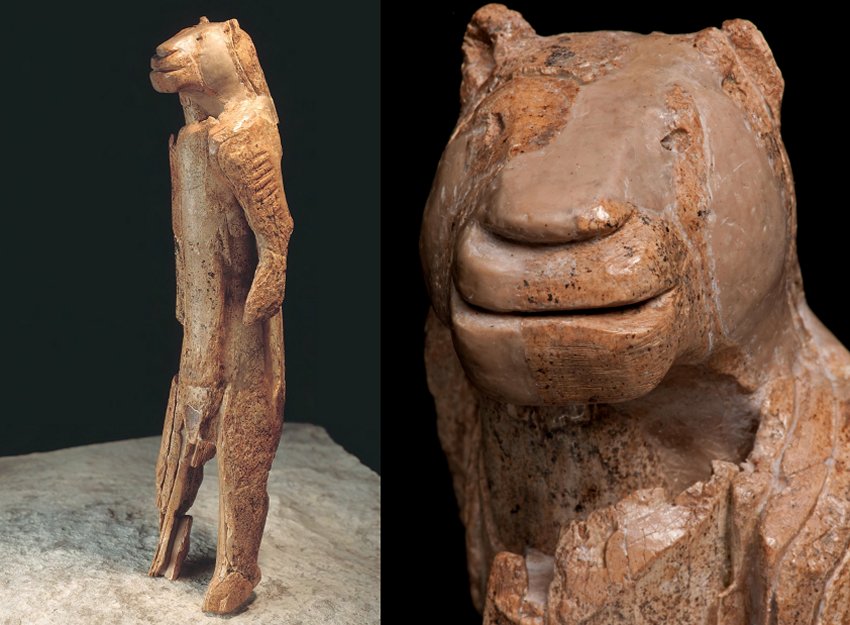
For more than 70 years, archaeologists have been piecing together the 'Lion man' out of mammoth ivory fragments.
Unfortunately, just one week later, before archaeologists could complete their fieldwork and analyze the finds, World War II began. The team was forced to quickly fill the excavation trenches using the same soil in which they found the ivory pieces.
Among the fragments, there were several pieces of the so-called 'Lion man' - one of the oldest and certainly one of the most remarkable statuettes in human history.
For more than 70 years, archaeologists have been piecing together the fragmented sculpture of 'Lion man' out of mammoth ivory fragments.
Their work took time because important parts of the figurine were still missing.
Surprisingly, in 2009, new excavations inside the Stadel Cave rediscovered of the original finding place of the ‘Lion Man’ fragments unearthed in 1939.
They were able to retrieve numerous additional fragments of the figure. It's the tallest and most spectacular of the ivory figurines discovered in four caves. The figurine that combines animal and human attributes, is 29.6 cm (11.7 inches) in height, 5.6 cm wide, and 5.9 cm thick.
The animal part is represented by the lion-head, the long shaped body and the arms formed as forelegs and paws of a big cat, the human part by the legs and feet, as well as the upright position.
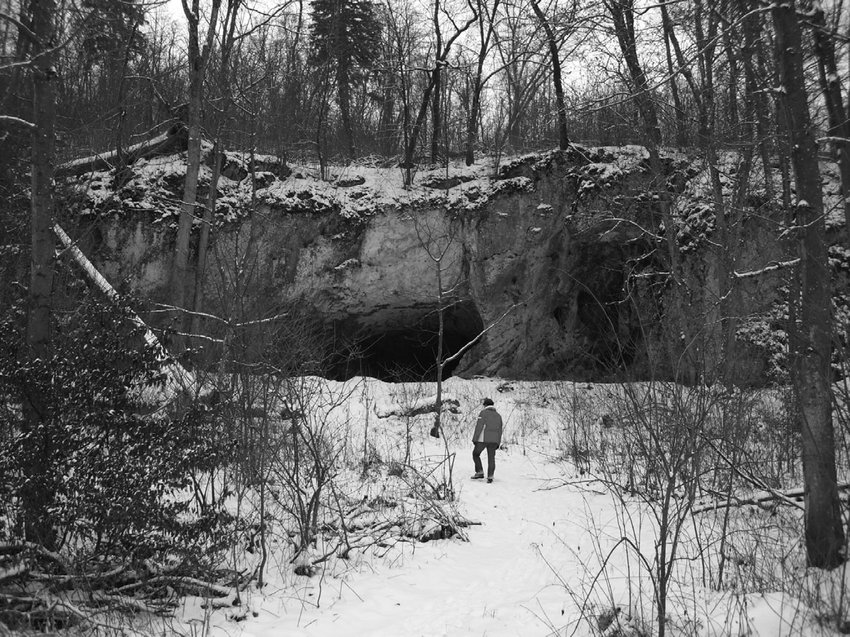 Hohlenstein-Stadel Cave: The entry to the Stadel Cave is located only a few meters above the valley floor and is not visible from the Vogelherd. The Löwenmensch statuette was found in a deep section inside this cave and was intentionally deposited. Photo by Martin Porr
Hohlenstein-Stadel Cave: The entry to the Stadel Cave is located only a few meters above the valley floor and is not visible from the Vogelherd. The Löwenmensch statuette was found in a deep section inside this cave and was intentionally deposited. Photo by Martin Porr
It's unclear whether the figurine represents a man or a woman. From time immemorial, the lion has been viewed as a symbol of the masculine virtues of courage and strength. Shamans still exist today in the Amazon region and Australia. Most of them are men.
On the other hand, the figure has some perplexing features. The navel, for example, a symbol of childbirth, is especially pronounced. A horizontal crease runs across the lower abdomen, a feature that is typically female.
The ‘Lion Man’ - currently on display in the City Museum of Ulm, in Germany - represents a unique relic, carved out of woolly mammoth ivory using a flint stone knife.
It is also very early prehistoric sculpture dated back to the Upper Paleolithic of about 40,000 BC.
Written by – A. Sutherland AncientPages.com Staff Writer
Copyright © AncientPages.com All rights reserved. This material may not be published, broadcast, rewritten or redistributed in whole or part without the express written permission of AncientPages.com
Expand for referencesMore From Ancient Pages
-
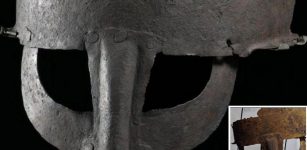 Why Is The Yarm Viking Helmet Special?
Archaeology | Aug 10, 2020
Why Is The Yarm Viking Helmet Special?
Archaeology | Aug 10, 2020 -
 Early Humans In The Paleolithic Age Had A More Varied Diet Than Previously Assumed
Archaeology | Nov 29, 2023
Early Humans In The Paleolithic Age Had A More Varied Diet Than Previously Assumed
Archaeology | Nov 29, 2023 -
 Norse Frost Giant Vafthrudnir Who Was A Mastermind Of Riddles
Featured Stories | Mar 24, 2025
Norse Frost Giant Vafthrudnir Who Was A Mastermind Of Riddles
Featured Stories | Mar 24, 2025 -
 The Third Greatest Fire Temple That Existed In Ancient Iran’s Sassanid Age – Unearthed
Archaeology | Jul 8, 2022
The Third Greatest Fire Temple That Existed In Ancient Iran’s Sassanid Age – Unearthed
Archaeology | Jul 8, 2022 -
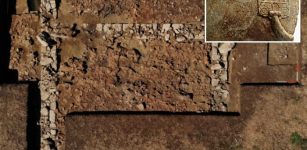 Archaic Temple (Part Of God Poseidon’s Sanctuary) At The Kleidi-Samikon Site In Greece – Unearthed
Archaeology | Jan 12, 2023
Archaic Temple (Part Of God Poseidon’s Sanctuary) At The Kleidi-Samikon Site In Greece – Unearthed
Archaeology | Jan 12, 2023 -
 Medieval Friars Were ‘Riddled With Parasites,’ Study Finds
Archaeology | Aug 19, 2022
Medieval Friars Were ‘Riddled With Parasites,’ Study Finds
Archaeology | Aug 19, 2022 -
 Amazing Prehistoric Forest Submerged Under Water Thousands Of Years Ago Re-Emerges On Welsh Beach
Archaeology | Nov 11, 2022
Amazing Prehistoric Forest Submerged Under Water Thousands Of Years Ago Re-Emerges On Welsh Beach
Archaeology | Nov 11, 2022 -
 Archaeologists Investigate A Fascinating Ice Age Mystery In A Cave Beneath A British Castle
Featured Stories | Oct 9, 2024
Archaeologists Investigate A Fascinating Ice Age Mystery In A Cave Beneath A British Castle
Featured Stories | Oct 9, 2024 -
 Wendigo: Cannibalistic Shapeshifter In Mythology Of Indians Of North America And Canada
Featured Stories | Sep 3, 2016
Wendigo: Cannibalistic Shapeshifter In Mythology Of Indians Of North America And Canada
Featured Stories | Sep 3, 2016 -
 Gnomes – Fantastic Supernatural Creatures Knowing Secrets Of Earth Mountains Rivers And Rocks
Myths & Legends | Nov 20, 2018
Gnomes – Fantastic Supernatural Creatures Knowing Secrets Of Earth Mountains Rivers And Rocks
Myths & Legends | Nov 20, 2018 -
 Three Judges Of Souls Await You On Chinvat Bridge – Gateway To Unknown Realms In Zoroastrian Beliefs
Featured Stories | Aug 11, 2021
Three Judges Of Souls Await You On Chinvat Bridge – Gateway To Unknown Realms In Zoroastrian Beliefs
Featured Stories | Aug 11, 2021 -
 Yarilo (Jarilo): Slavic God Of Spring, Powerful Sexual Energy, Symbol Of Dying, Regeneration And Abundance
Featured Stories | May 7, 2019
Yarilo (Jarilo): Slavic God Of Spring, Powerful Sexual Energy, Symbol Of Dying, Regeneration And Abundance
Featured Stories | May 7, 2019 -
 Why Is La Ferrassie Man A Unique And Famous Neanderthal?
Featured Stories | Oct 30, 2023
Why Is La Ferrassie Man A Unique And Famous Neanderthal?
Featured Stories | Oct 30, 2023 -
 Historic Graffiti Made By Soldiers Sheds Light On Africa’s Maritime Heritage – New Study
Archaeology | May 6, 2022
Historic Graffiti Made By Soldiers Sheds Light On Africa’s Maritime Heritage – New Study
Archaeology | May 6, 2022 -
 Ancient Secrets Of The Masters Of Mu – Myths And Legends Examined – Part 1
Ancient Mysteries | Aug 24, 2018
Ancient Secrets Of The Masters Of Mu – Myths And Legends Examined – Part 1
Ancient Mysteries | Aug 24, 2018 -
 Incredible Ancient Machines Invented By Hero Of Alexandria – An Engineer Far Ahead Of His Time
Featured Stories | Jun 3, 2020
Incredible Ancient Machines Invented By Hero Of Alexandria – An Engineer Far Ahead Of His Time
Featured Stories | Jun 3, 2020 -
 Peculiar Accounts Of Ancient Flying Metallic Dragons And Bells In China And Japan
Ancient Mysteries | Dec 27, 2018
Peculiar Accounts Of Ancient Flying Metallic Dragons And Bells In China And Japan
Ancient Mysteries | Dec 27, 2018 -
 Soap Was Invented In 2800 B.C By Babylonians
Ancient History Facts | Jun 17, 2016
Soap Was Invented In 2800 B.C By Babylonians
Ancient History Facts | Jun 17, 2016 -
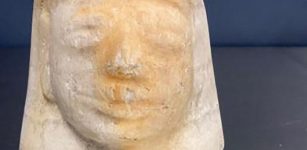 3,000-Year-Old Ancient Egyptian Artifact Seized By US Agents In Memphis
Archaeology | Aug 29, 2022
3,000-Year-Old Ancient Egyptian Artifact Seized By US Agents In Memphis
Archaeology | Aug 29, 2022 -
 Mystery Of The Scottish Medieval Wanderer And The Bog Bodies At Cramond Investigated By Scientists
Archaeology | Mar 28, 2022
Mystery Of The Scottish Medieval Wanderer And The Bog Bodies At Cramond Investigated By Scientists
Archaeology | Mar 28, 2022


